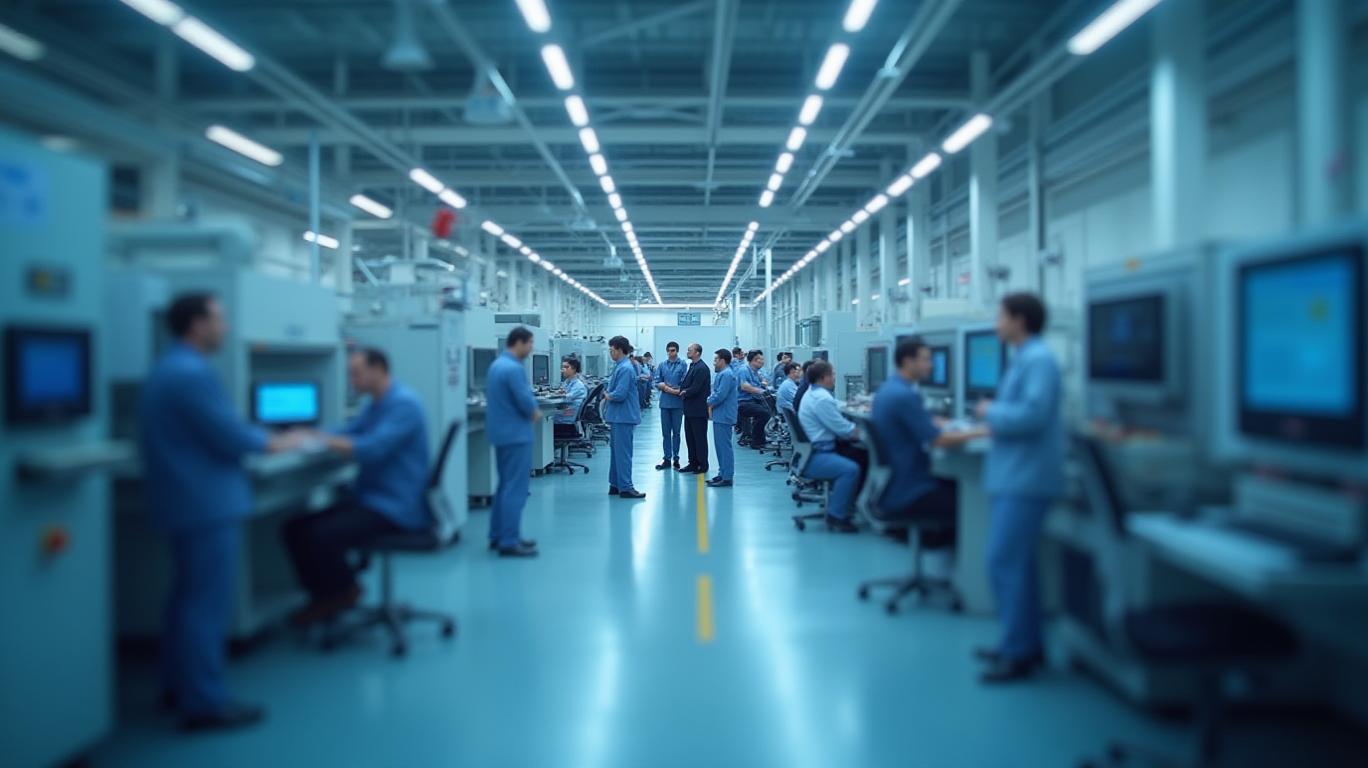Helios Technologies Navigates Headwinds with Q1 Beat, but Tariffs Loom Large
Helios Technologies (NASDAQ: HLIO) delivered a mixed first-quarter performance, beating revenue estimates but revealing persistent margin pressures and strategic challenges tied to global trade tensions. While the company’s $195.5 million in Q1 revenue narrowly topped the $187.6 million FactSet consensus, the 8% year-over-year decline underscores broader macroeconomic and geopolitical headwinds. Below is an in-depth analysis of Helios’ results, strategic shifts, and risks ahead.

Revenue Growth Stalls, but Operational Leverage Shines
Helios’ Q1 revenue declined 8% compared to Q1 2024, driven by a 11% drop in Hydraulics sales—a segment struggling with soft demand in agriculture and industrial markets. Electronics sales held relatively steady (-1%), with health and wellness markets in Asia Pacific (APAC) offsetting declines in other regions. Notably, sequential sales improved 9% from Q4 2024, suggesting operational discipline is stabilizing performance.
Profitability, however, faced headwinds. Gross margin contracted 110 basis points to 30.6%, as higher material costs and lower volume diluted margins. Operating income fell 16% year-over-year to $17.0 million, while adjusted EBITDA dipped 12% to $33.8 million. Management cited tariffs and supply chain costs as key culprits, though operating leverage improved sequentially, with income rising 23% on incremental sales.
Segment Performance: Electronics Outperforms Hydraulics
The Electronics segment emerged as a bright spot. Despite a 1% revenue decline to $69.1 million, its operating income surged 13% to $8.0 million, with margins expanding 140 basis points to 11.6%. Growth in health and wellness markets—such as recreational vehicles and commercial food service equipment—drove APAC sales up 24%, masking softer results in the Americas and EMEA.
Conversely, Hydraulics sales fell 11% to $126.4 million, with EMEA sales plummeting 17% due to agricultural weakness. Hydraulics operating income dropped 20% to $17.4 million, as margin pressures (down 150 basis points to 13.8%) outpaced revenue declines.
Balance Sheet Strengthens Amid Debt Reduction
Helios made progress on its financial flexibility. Total debt fell 15% year-over-year to $445.6 million, reducing the net debt-to-Adjusted EBITDA ratio to 2.7x from 3.1x in Q1 2024. Cash and equivalents rose 23% to $45.9 million, supported by a 7% increase in operating cash flow to $19.0 million. These metrics, combined with a 28-year dividend streak, highlight management’s focus on capital preservation.
Guidance Signals Caution Amid Tariff Uncertainty
For Q2, Helios expects revenue of $198–$206 million, with adjusted EBITDA margins of 17.5%–18.5%. While the midpoint of revenue guidance aligns with analyst expectations, management warned that second-half results could face “significant uncertainty” due to escalating tariffs and geopolitical risks. The company estimates $15 million in direct tariff costs for 2025H2, primarily from U.S. imports of Chinese goods.
Strategic Priorities: Localizing Production to Mitigate Tariffs
Helios is pivoting to a “in the region for the region” manufacturing strategy, aiming to reduce reliance on tariff-prone supply chains. Key steps include:
- Expanding Electronics production in Tijuana, Mexico, to serve U.S. markets.
- Establishing Regional Operational Centers of Excellence in Indiana and Florida to streamline Hydraulics operations.
- Reducing fixed costs through headcount cuts at its engineering hub in San Antonio.
These moves reflect a proactive stance, though execution risks remain. For instance, relocating production could face labor or regulatory hurdles, while demand in key markets like agriculture and construction remains volatile.
Key Risks and Challenges
- Tariff Volatility: U.S.-China trade tensions could escalate further, with ~$20 million of Q2 exports already exposed to retaliatory tariffs.
- Geopolitical Conflicts: Ongoing wars in Ukraine and the Middle East threaten supply chain stability.
- Margin Pressures: Gross margin has contracted 340 basis points over five years, signaling structural cost challenges.
Conclusion: A Resilient Play, but Buy with a Long View
Helios’ Q1 results reflect a company navigating choppy waters with discipline. While revenue growth remains elusive, margin resilience (operating leverage up 23% sequentially), balance sheet improvements, and dividend continuity are positives. The stock’s forward P/E of ~20x (based on 2025 estimates) appears reasonable given its niche engineering expertise and cash flow stability.
However, investors must weigh near-term risks: tariffs could shave ~$0.25 off 2025 EPS, per management’s estimates, and macroeconomic weakness in key markets persists. The “in the region” strategy offers long-term upside, but execution will determine whether Helios can regain top-line momentum. For now, HLIO is a hold—ideal for investors with a multiyear horizon and tolerance for trade-related volatility.
Final Note: Helios’ ability to pivot production and maintain margins in a high-cost environment suggests management has the tools to weather current storms. Yet, the path to sustained growth hinges on resolving trade disputes and reviving demand in cyclical markets like agriculture. Stay tuned.

Comments
No comments yet